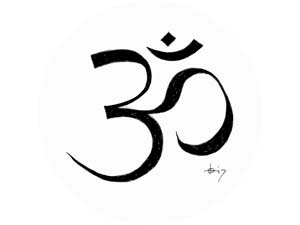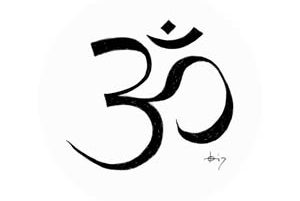Nivedita Yohana
Wijsheidsweb, 2018-02

How often do we sit in silence without staring into the shiny gadgets in our hands? Taking pictures of our family, cats or dogs or babies or vacation photos eager to post them online to share and receive approval from friends, acquaintances and strangers. Anxious to know if, someone hit the ‘like’ button and getting relieved to know that someone did. Eager to know how many followers you have on the Instagram or on the Pinterest or on the zillion other social media and oblivious to what is happening in the immediate physical surroundings or with the human beings who have chosen to live with us. The moment we are up on our feet in the morning – we get sucked into the routine and hop on the conveyor belt of the unconsciousness which eventually will deposit us to the grave. The default position of our waking consciousness is often conveniently set to inertia and goes about in life like a somnambulist lost in the grid of our set patterns imprinted in the childhood, friendships and experiences which are limited only to us. Consciousness is amorphous and an ever-expanding entity. We are often prohibited by our senses and prescribed by senses that live in the realm of five apertures – sight (vision), hearing (audition), taste (gustation), smell (olfaction), and touch (sensation) – that serves as a window into a part of the reality which we think is the end and blissfully ignorant of the fact that the reality is limitless, space is infinite and time is eternal. Through Yoga we can break these bonds which chain us to the mundane reality to access the higher dimensions.
Yoga literally means “union” or “to yoke” our everyday selves with our highest most divine selves. Yoga is a powerful tool that teaches us how to lead a life of balance, peace, harmony, strength and flexibility at all levels. A disciplined practice of yoga has the transformational benefits of deepening our connection to the body, mind and spirit, supporting us in living and loving long, vibrant, happy, healthy and fulfilling lives.
All our emotions get stored in the solar plexus, and it is also the point from where one’s gut feelings arise. The size of the solar plexus is said to like the size of a small gooseberry. However, for those who do yoga and meditation, it becomes much bigger – almost three to four times bigger than the normal size. The more expanded your solar plexus, the greater is your mental stability and your intuition.
Sri Sri Ravi Shankar
The “Goal” of Yoga
The “goal” of yoga is to align to the universal and all-inclusive consciousness in order to experience the bliss, freedom and the stillness of full consciousness. Alignment, is related to the intellect and body, and refers to how various parts of us are coordinated and interconnected. The world is what we think, see and believe it to be. It is subjective in essence – a projection of what we feel and think is, based on past experiences and conditionings. What we see in others is the reflection of what we have inside, like a mirror that is only projecting what is inside. We have the potential, using conscious intentions, thoughts and words, to co-create the life we want, to go beyond our limitations and fears, to surrender and open, to choose the type of person we want to be, to flow with the divine grace, to see the beauty in and all around us.
The eight principles of Yoga are as follows
The Yamas and Niyamas can be approached independently or they can be seen as a progressive system towards Realization.
1. Yamas
Ethical standards relating to the Golden Rule of “Do unto others as would have them do unto you”.
The five yamas are:
- Ahimsa: nonviolence
- Satya: truthfulness
- Asteya: non-stealing
- Brahmacharya: non-excess
- Aparigraha: non-attachment
2. Niyama (Habit)
Niyama, the second limb, is do with self-discipline and spiritual observances. Self- discipline comes when we are constantly aware of ourselves and our surrounding. Consistently being conscious of our own thoughts and words and ruthlessly editing to align our intentions that accord with the divine (positivity). Cultivating the habit of looking objectively at ourselves be brutally honest with our intentions and tear down all the defenses we have meticulously built around our ego to safe guard it.
- Saucha: cleanliness/purity
- Santosha: contentment
- Tapas: heat; spiritual austerities
- Svadhyaya: study of the sacred scriptures and of one’s self
- Isvara pranidhana: surrender to God.
3. Asana (Posture)
Asana, the postures practiced in yoga, comprise the third limb. In the yogic view, the body is a temple of spirit, the care of which is an important stage of our spiritual growth. Through the practice of asana, we develop the habit of discipline and the ability to concentrate, both of which are necessary for meditation.
4. Pranayama: Breath Control
Generally translated as breath control, this fourth stage consists of techniques designed to gain mastery over the respiratory process while recognizing the connection between the breath, the mind, and the emotions. As implied by the literal translation of pranayama, “life force extension,” yogis believe that it not only rejuvenates the body but also actually extends life itself. You can practice pranayama as an isolated technique (i.e., simply sitting and performing several breathing exercises), or integrate it into your daily hatha yoga routine.
5. Pratyahara: Sensory Transcendence
Pratyahara, the fifth limb, means departure from senses, or sensory transcendence. It is during this stage that we make the conscious effort to draw our awareness away from the external world and outside stimuli. Keenly aware of, yet cultivating a detachment from, our senses, we direct our attention internally. The practice of pratyahara provides us with an opportunity to step back and look at ourselves. This withdrawal privileges us to objectively observe our cravings: habits that are perhaps detrimental to our health and which likely interfere with our inner growth.
6. Dharana: Concentration
As each stage prepares us for the next, the practice of pratyahara creates the setting for dharana, or concentration. Having relieved ourselves of outside distractions, we can now deal with the distractions of the mind itself. In the practice of concentration, which precedes meditation, we learn how to slow down the thinking process by concentrating on a single mental object: a specific energetic center in the body, an image of a deity, or the silent repetition of a sound. We, of course, have already begun to develop our powers of concentration in the previous three stages of posture, breath control, and withdrawal of the senses. In asana and pranayama, although we pay attention to our actions, our attention travels. Our focus constantly shifts as we fine-tune the many nuances of any particular posture or breathing technique. In pratyahara we become self-observant; now, in dharana, we focus our attention on a single point. Extended periods of concentration naturally lead to meditation.
7. Dhyana: Single-Pointed Concentration/ Flow
Meditation or contemplation, is the uninterrupted flow of concentration. Although concentration (dharana) and meditation (dhyana) may appear to be one and the same, a fine line of distinction exists between these two stages. Where dharana practices one-pointed attention, dhyana is ultimately a state of being keenly aware without focus. At this stage, the mind has been quieted, and in the stillness, it produces few or no thoughts at all. The strength and stamina it takes to reach this state of stillness is quite impressive. While this may seem a difficult if not impossible task, remember that yoga is a process. Even though we may not attain the “picture perfect” pose, or the ideal state of consciousness, we benefit at every stage of our progress.
8. Samadhi: Total Absorption/Bliss
The final stage is samadhi, as a state of ecstasy. At this stage, the meditator merges with his or her/his point of focus and transcends the Self altogether. The meditator comes to realize a profound connection to the Divine, an interconnectedness with all living things. With this realization comes the “peace that passeth all understanding”; the experience of bliss and being at one with the Universe. On the surface, this may seem to be a rather lofty, “holier than thou” kind of goal. However, if we pause to examine what we really want to get out of life, would not joy, fulfillment, and freedom somehow find their way onto our list of hopes, wishes, and desires? We also might give some thought to the fact that this ultimate stage of yoga — enlightenment — can neither be bought nor possessed. It can only be experienced, the price of which is the continual devotion of the aspirant.
- Bayne, T., Cleeremans, A., & Wilken, P. (2014). The Oxford companion to consciousness. Oxford: Oxford University Press.
- Brand, R. (2017). Recovery: freedom from our addictions. New York: Henry Holt and Company
- Connolly, P. (2014). A students guide to the history and philosophy of yoga. Sheffield: Equinox Publishing Ltd.
- Desmarais, M. M. (2009). Changing minds: mind, consciousness, and identity in Patañjalis Yoga–sūtra and cognitive neuroscience. Cambridge: International Society for Science and Religion.
- Feuerstein, G. (2008). The yoga tradition: its history, literature, philosophy, and practice. Prescott, AZ: Hohm Press.
- (2009). Hatha yoga: the yogi philosophy of physical well-being. Los Angeles, CA: Indo European Publishing.
- Rao, R. R. (2006). Journey to the real self: a book on yoga consciousness. Vijinigiri, Vizianagaram Dist., Andhra Pradesh, India: Yoga Consciousness Trust.
[1] Source: eight-limbs-yoga-samadhi










